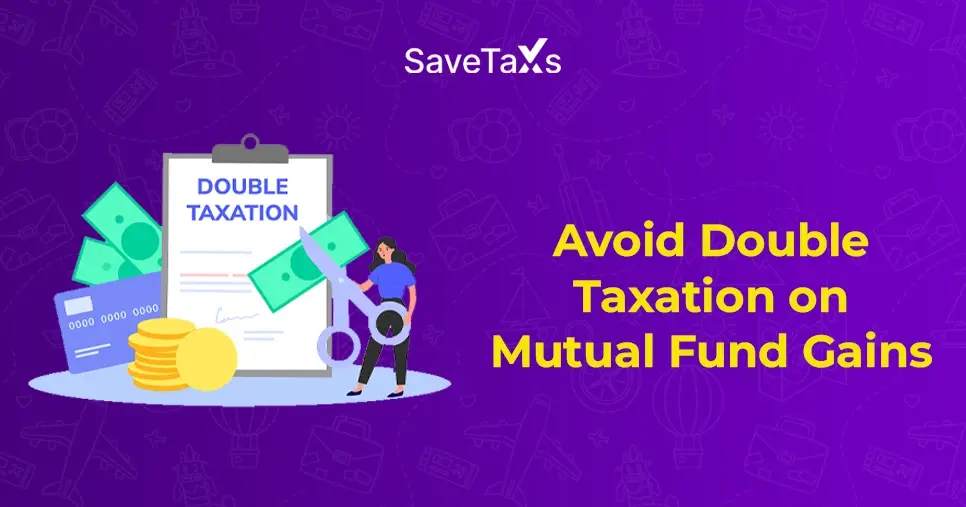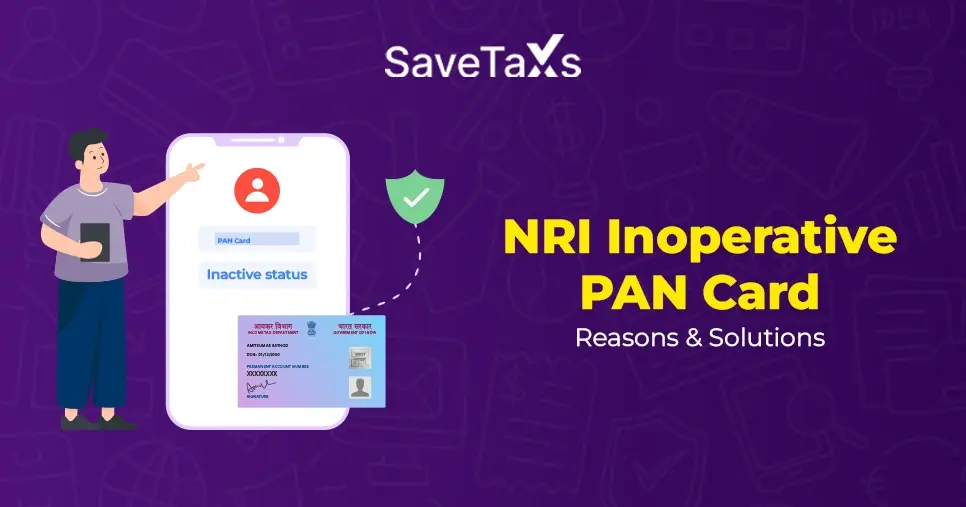- What are the 5 Heads of Income?
- Income From Salary
- Income from House Property
- Income from Profits and Gains from Business or Profession
- Income from Capital Gains
- Income From Other Sources
- What is the Difference Between Heads of Income and Sources of Income?
- What are the Five Key Features of Tax?
- To Conclude
A taxpayer's income is divided into five heads of income as per the Income Tax Act. For accurate calculation of taxes, you must classify your earnings correctly under these five income heads at the end of each financial year. It becomes important for you to understand which earnings belong to which head of income. This blog will give you a clear overview of the five heads of income.
What are the 5 Heads of Income?
According to Section 14 of the Income Tax Act, 1961, every income subject to taxation under the Income Tax Act, and for calculating the total income, must be classified under the following five heads:
- Income from Salary
- Income from Capital Gains
- Income from House Property
- Income from Profits and Gains from Business or Profession
- Income from Any Other Sources
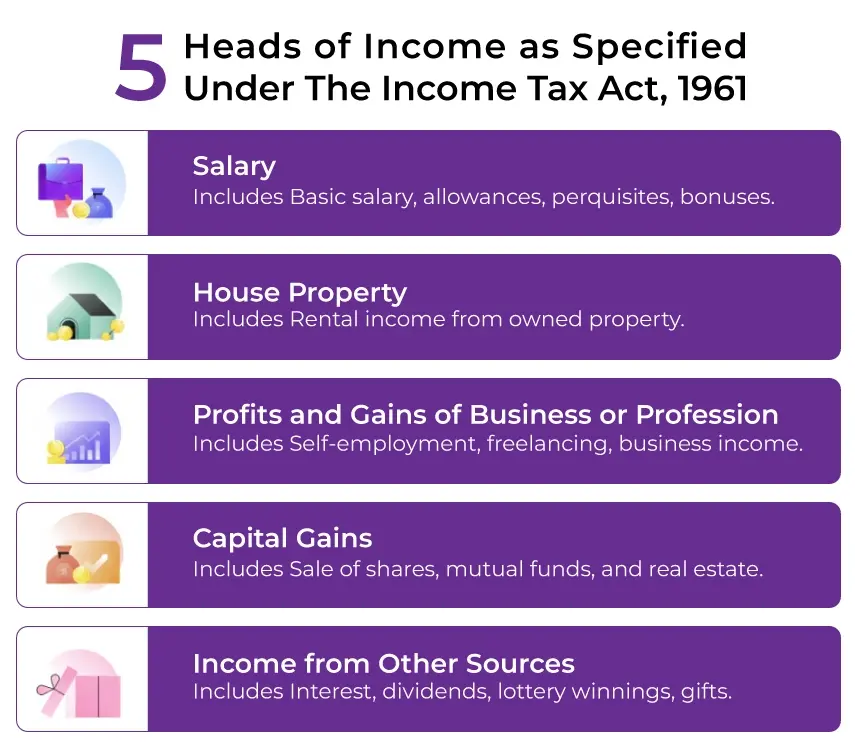
Income From Salary
Income received in return for the services you provide under an employment contract is taxed under this head. It includes salary, advance salary, gratuity, commission, perquisites, annual bonus, and pension. The following sections govern salary income:
- Section 15 – Taxability of salary
- Section 16 – Deductions available under the head “Salaries”
- Section 17 – Definition of salary, perquisites, and profits in lieu of salary
Some necessary exemptions under this head include:
- HRA (House Rent Allowance): If you are a salaried individual living in a rented house, you can claim HRA for partial or complete tax exemption based on the rules.
- Transport Allowance (for specially-abled employees): Employees who are blind, deaf, dumb, or orthopedically handicapped are eligible for an exemption from the transport allowance. (Note: The earlier limit of ₹1,600 per month is no longer widely applicable; allowances now follow updated disability-based exemption rules.)
You must report salary income details in Schedule S of your ITR form.
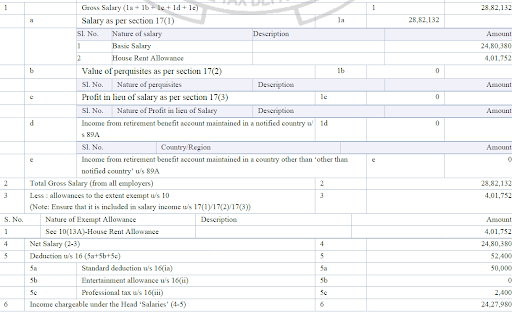
Income from House Property
Any income received from a residential or commercial property is taxed under this head. Primarily, this includes rental income. House property income is classified into:
- Let-out property
- Self-occupied property
- Deemed let-out property
If you own more than two self-occupied houses, only two will be treated as self-occupied. The remaining will be considered deemed let-out property (correct spelling updated).
Income from both commercial and residential properties rented out is taxable under this head. You must mention these details in Schedule HP of your ITR.

Income from Profits and Gains from Business or Profession
Under this head, profits or gains you earn from any business or profession are taxable. You can deduct expenses incurred to earn such income.
The following types of income are chargeable under this head:
- Benefits or perquisites arising from business
- Profits earned by an organisation
- Income from the sale of a license
- Income earned by an individual during the assessment year
- Export incentives and government scheme-related receipts
- Salary, bonus, or remuneration received by a partner from a partnership firm
Individuals and HUFs earning income from business or profession must file ITR-3 or ITR-4.
Income from Capital Gains
Profits you earn by selling or transferring a capital asset held as an investment are taxed as capital gains. Capital assets include gold, mutual funds, stocks, bonds, and real estate. Capital gains are classified as:
- Short-term capital gains (STCG)
- Long-term capital gains (LTCG)
Below is the updated table showing holding periods and tax rates:
| Asset Nature | Holding Period | Short-Term Tax Rate (Sold before 23-Jul-2024) |
Short-Term Tax Rate (Sold on or after 23-Jul-2024) |
Long-Term Tax Rate (Sold before 23-Jul-2024) |
Long-Term Tax Rate (Sold on or after 23-Jul-2024) |
|---|---|---|---|---|---|
| Immovable property (Land / House / Flat) |
24 months | Slab Rates | Slab Rates | 20% after indexation | 12.5% (no indexation)** |
| Unlisted equity shares | 24 months | Slab Rates | Slab Rates | 20% after indexation | 12.5% (no indexation) |
| Listed equity shares / Equity mutual funds | 12 months | 15% | 20% | 10% | 12.5% (no indexation) |
| Other capital assets | 36 months | Slab Rates | Slab Rates | 20% after indexation | 12.5% (no indexation) |
| Non-equity mutual funds (Debt funds purchased after 1-Apr-2023) |
— | Slab Rates | Slab Rates | Slab Rates | Slab Rates |
Note:
- The 36-month holding period rule does not apply if sold on or after 23 July 2024.
- Individuals and HUFs may still claim indexation benefits for specific older assets under transitional rules (not for all asset classes).
You need to include the details of capital gains in Schedule CG of your ITR. If you are an individual, you need to choose ITR-2 or ITR-3.
Income From Other Sources
Any income not covered under the above four heads is taxed here. These fall under Section 56(2) and include:
- Interest income
- Dividend income
- Rent on plant and machinery
- Winnings from the lottery, gambling, and card games
- Bank deposit interest
- Sports rewards
- Gifts taxable u/s 56(2)(x)
- Family pension
What is the Difference Between Heads of Income and Sources of Income?
According to the Income Tax Act, a head of household classifies an individual’s earnings for tax purposes. The five heads include:
- Capital gains
- Income from Salaries
- Income from House Property
- Profits and Gains from Business or Profession
- Income from Other Sources
On the other hand, sources of income refer to where the income is actually earned from.
- For individuals: salary, interest, commission, etc.
- For businesses: profits, investments, government incentives, etc.
What are the Five Key Features of Tax?
The five features of tax are:
- Necessary Payments: Every liable citizen must pay tax; it is not optional, and refusing to do so may put them in trouble, as it is a punishable offence.
- Periodic and Regular Payment: Taxes are not paid in one lump sum; you must pay them periodically and regularly, as set by the tax authority.
- Purpose: Taxes are charged to fund the government expenses. Tax payments allow the government to fulfill public expenditures, which contribute to the country's overall development and welfare.
- No Quid-Pro-Quo: Tax doesn't have any direct quid pro quo between the public authority and taxpayers. The aim here is to benefit everyone rather than just a single individual.
- Various Types of Taxes: Taxes can take numerous forms across countries to cover a wide range of financial activities. Generally, there are two main types of taxes: Direct (income tax) and indirect taxes (goods and services tax). Other types of taxes include business taxes, property taxes, and sales taxes, each with its own purpose and set of rules.
To Conclude
This blog will help you understand the five heads of income with sections. You can now easily classify your income under the proper heads, which is mandatory. However, if you want to compute your overall tax liability accurately and eliminate unnecessary penalties, you can either use an Income tax calculator or contact the experts at Savetaxs.
We are a team of Chartered Accountants, Company Secretaries, and legal experts with more than 30 years of experience, helping NRIs with tax-related matters for over two decades. Whether you need help filing ITR or handling any tax issue, our experts are available 24×7 across all time zones.
Note: This guide is for informational purposes only. The views expressed in this guide are personal and do not constitute the views of Savetaxs. Savetaxs or the author will not be responsible for any direct or indirect loss incurred by the reader for taking any decision based on the information or the contents. It is advisable to consult with either a Chartered Accountant (CA) or a professional Company Secretary (CS) from the Savetaxs team, as they are familiar with the current regulations and help you make accurate decisions and maintain accuracy throughout the whole process.

Mr. Ritesh has 20 years of experience in taxation, accounting, business planning, organizational structuring, international trade financing, acquisitions, legal and secretarial services, MIS development, and a host of other areas. Mr Jain is a powerhouse of all things taxation.
- Double Tax Avoidance Agreement (DTAA) Between India and Japan
- What is the Double Tax Avoidance Agreement (DTAA) Between India and Singapore?
- Double Tax Avoidance Agreement (DTAA) Between India and Netherlands
- Section 206AA: How NRIs Without PAN Can Avoid Higher TDS
- Complete Guide for Income Tax Audit Under Section 44AB
Want to read more? Explore Blogs
Frequently Asked Questions
No matter what your source of income is, we've got you covered. There’s a plan for everybody!
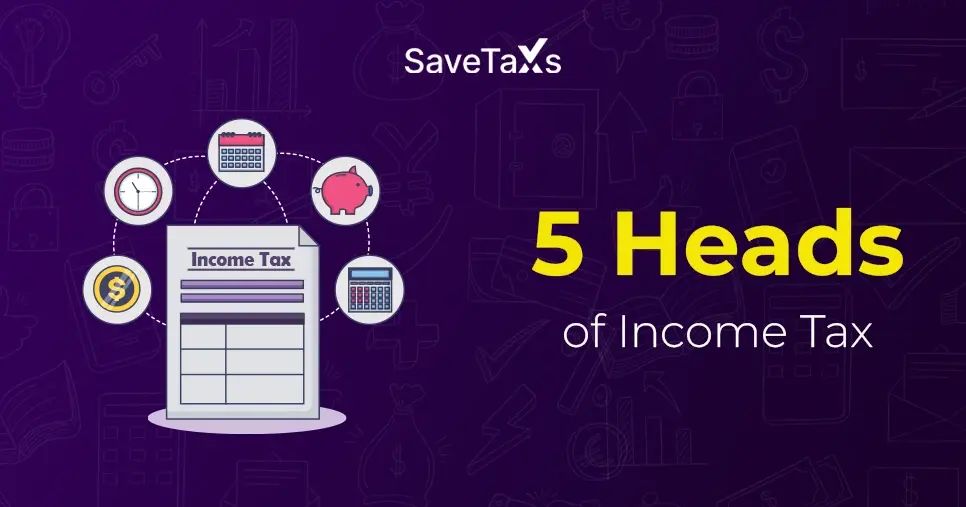
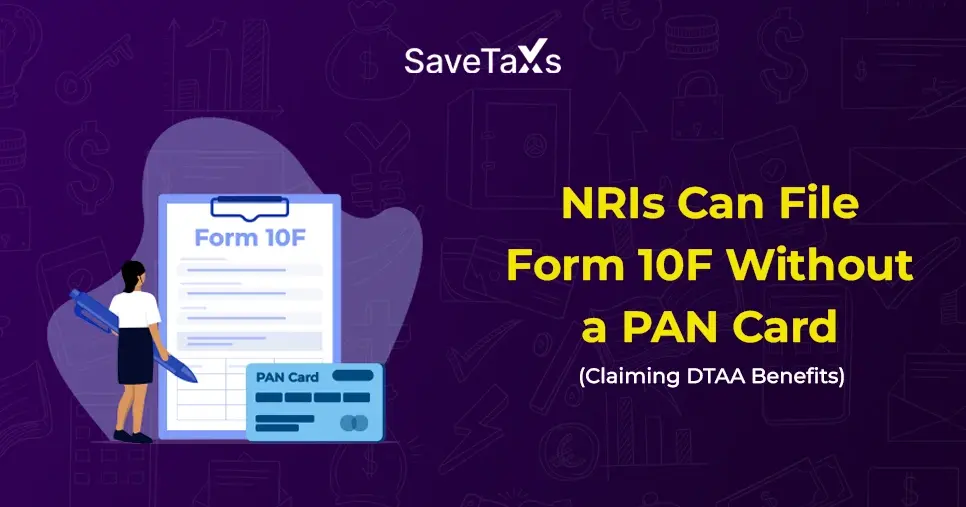
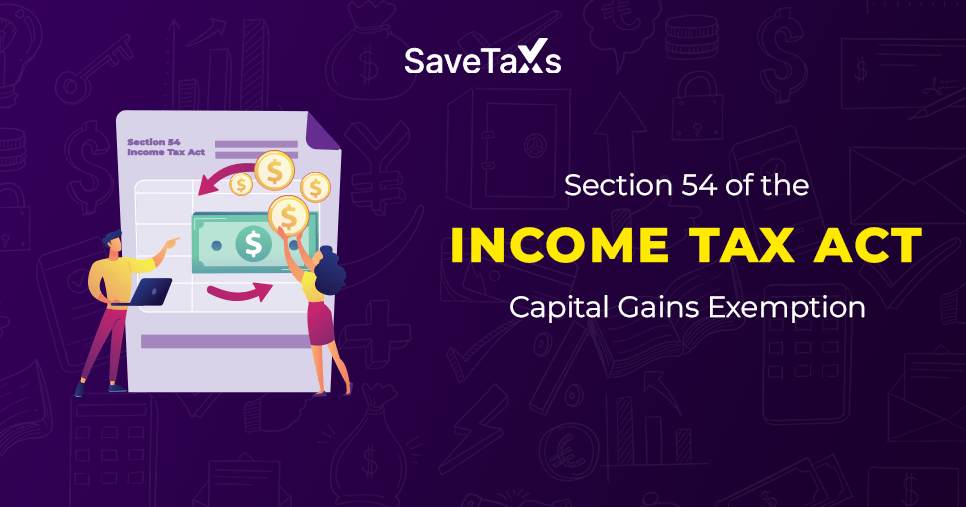


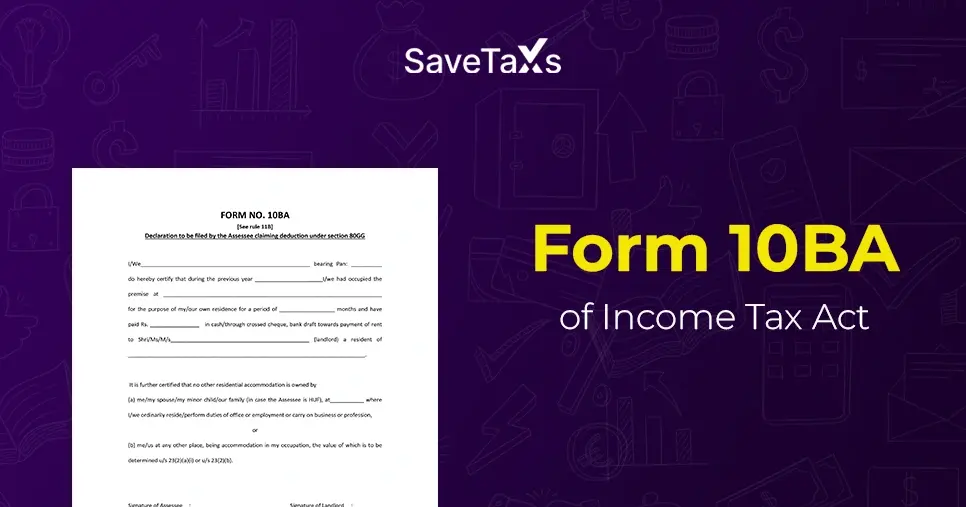
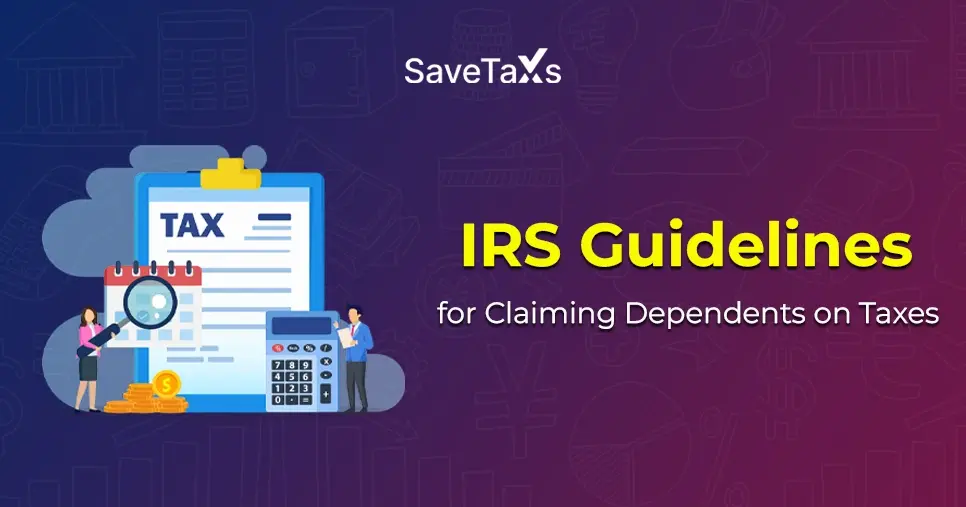
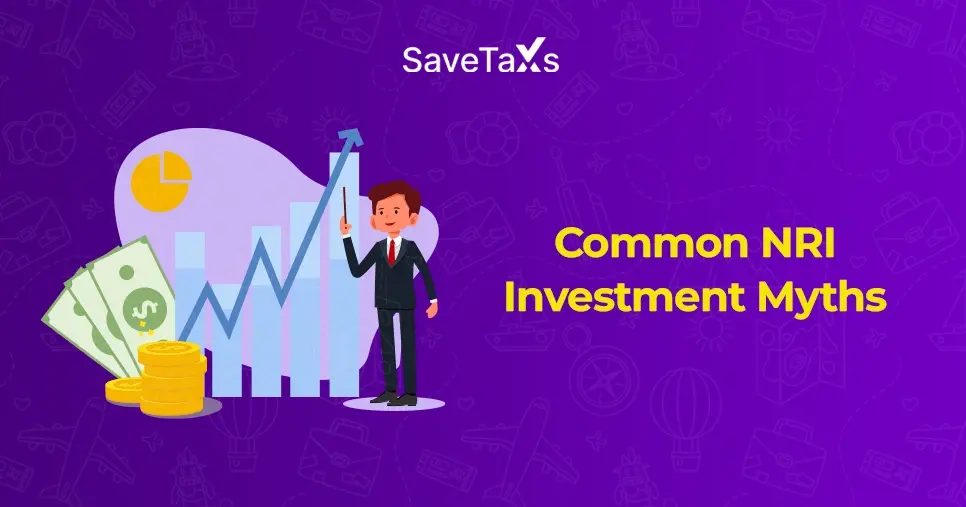
_1766559165.png)
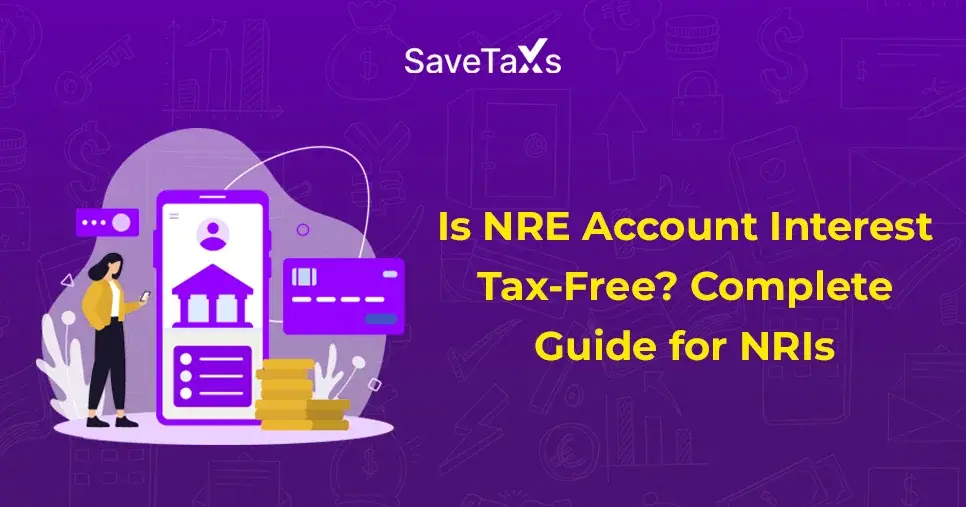
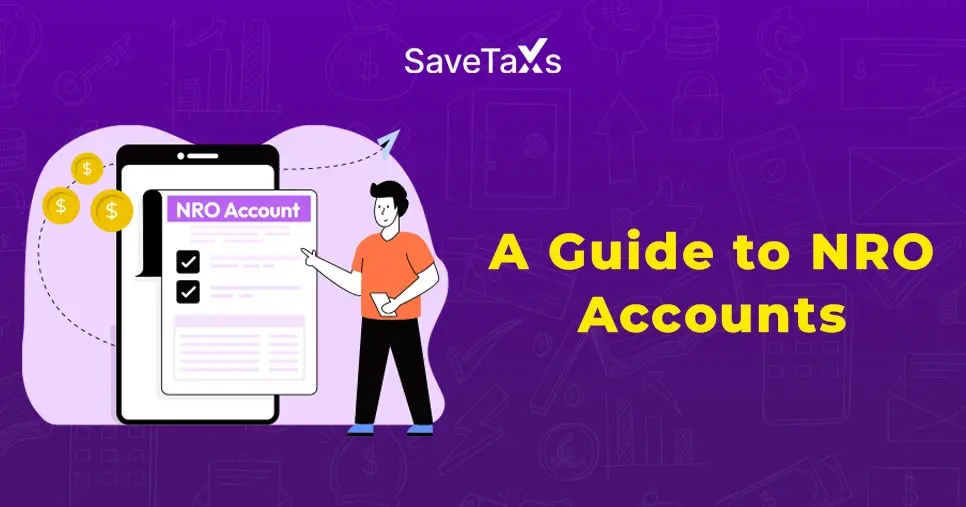
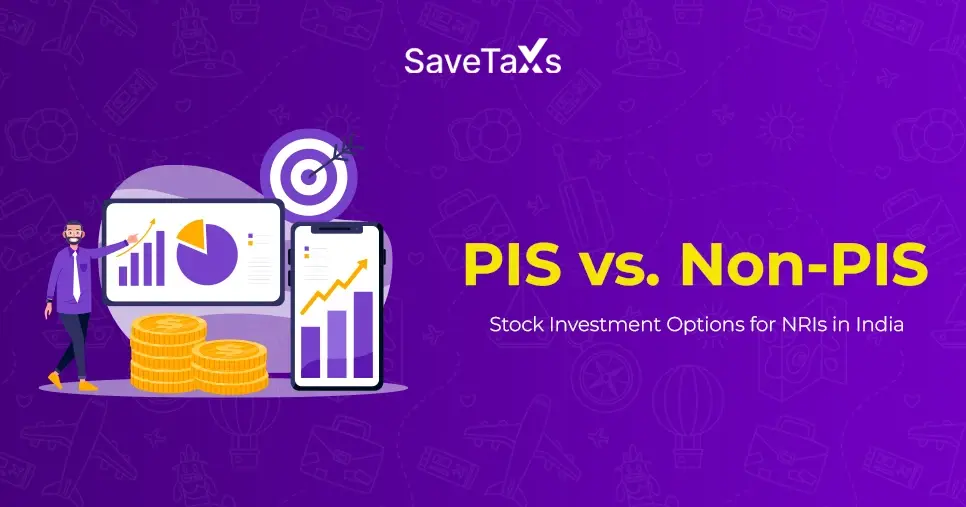
_1756467732.webp)

_1754392689.webp)
_1766644785.png)



